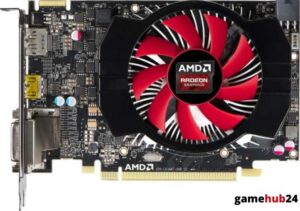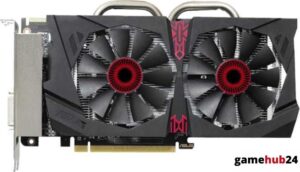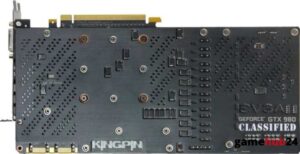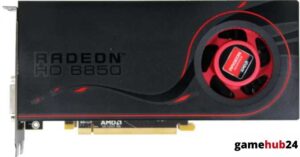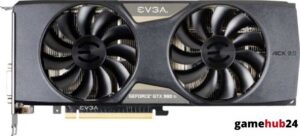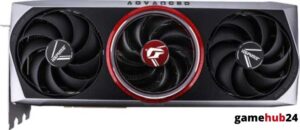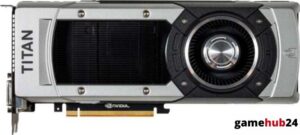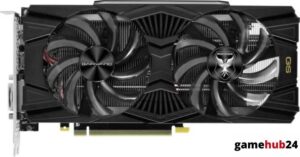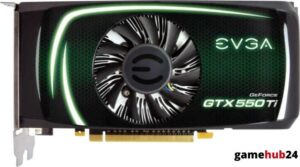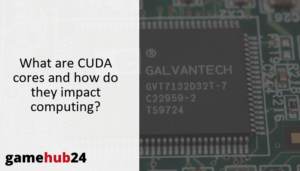The debate over “FreeSync vs. G-Sync” is quite popular among gamers. Thanks to AMD and NVIDIA, these adaptive synchronization technologies are radically enhancing visual experiences and overall performance, which is transforming the gaming industry.
In order to eliminate screen tearing and stuttering and provide a more fluid gaming experience, FreeSync and G-Sync are essential components of the gaming industry. AMD’s FreeSync leverages the Adaptive-Sync standard, but NVIDIA’s proprietary G-Sync requires a dedicated hardware module. Both systems synchronize the GPU frame rate and the display’s refresh rate; however, depending on connection interfaces, monitor technology, and hardware compatibility, their performance may differ. Often, the decision between FreeSync and G-Sync comes down to personal preferences and financial constraints.
- FreeSync and G-Sync are adaptive synchronization technologies that enhance gaming experiences.
- FreeSync uses the Adaptive-Sync standard, while G-Sync requires a specific hardware module.
- Both technologies synchronize the display’s refresh rate with the GPU’s frame rate.
- Performance can vary based on hardware compatibility, monitor technology, and connection interfaces.
- The choice between FreeSync and G-Sync depends on user requirements and cost considerations.
| Technology | Developer | Description | Hardware Requirement | Cost |
|---|---|---|---|---|
| FreeSync | AMD | Adaptive synchronization technology that eliminates screen tearing and reduces stuttering. Available in different tiers, including FreeSync Premium and FreeSync Premium Pro. | Compatible with AMD graphics cards and monitors that support the Adaptive-Sync standard. Works with both HDMI and DisplayPort. | Generally more affordable due to leveraging the open Adaptive-Sync standard. |
| G-Sync | NVIDIA | Proprietary adaptive synchronization technology that also eliminates screen tearing and reduces stuttering. Requires a special hardware module in the monitor. Available in different versions, including G-Sync Ultimate and G-Sync Compatible. | Requires NVIDIA graphics cards and monitors with a special hardware module. Primarily uses DisplayPort, but recent versions also support HDMI. | Tends to be more expensive due to the need for a special hardware module. |
This table provides a comparison between AMD’s FreeSync and NVIDIA’s G-Sync technologies, highlighting their developers, descriptions, hardware requirements, and cost.
What are FreeSync and G-Sync?
The gaming industry has completely changed thanks to ground-breaking technologies like FreeSync and G-Sync. These are adaptive synchronization solutions that NVIDIA and AMD, respectively, have developed. By doing away with screen tearing and stuttering, these technologies offer a more fluid gaming experience. They produce a fluid visual experience by matching the frame rate of your GPU with the refresh rate of your display. Gamers are often comparing FreeSync vs. G-Sync because each technology has its own set of requirements and special advantages.
What is AMD’s FreeSync technology?
AMD’s adaptation of adaptive synchronization is called FreeSync. It uses the Adaptive-Sync standard to match the GPU’s frame rate and the display’s refresh rate. A smoother gaming experience is achieved by this synchronization, which also lessens stuttering and removes screen tearing. There are many levels of FreeSync, such as FreeSync Premium and FreeSync Premium Pro, which come with extra capabilities like support for high dynamic range (HDR) and low framerate compensation (LFC).
How does NVIDIA’s G-Sync differ?
G-Sync is a proprietary adaptive synchronization technology from NVIDIA that also attempts to lessen stuttering and eliminate screen tearing. G-Sync, in contrast to FreeSync, necessitates a unique hardware module in the monitor, which may raise the price. G-Sync is available in other variants as well, such as G-Sync Compatible and G-Sync Ultimate. Features like HDR compatibility and a refresh rate guarantee of at least 120 Hz are available in the Ultimate version.
Did you know that a specific hardware module in the monitor is needed for NVIDIA’s G-Sync? This can add to the monitor’s cost. This is one of the primary causes of the typical price difference between G-Sync and FreeSync monitors.
How do FreeSync and G-Sync impact gaming?
Games benefit greatly from FreeSync and G-Sync since they enhance the visual experience. They get rid of frequent problems like screen tearing and stuttering, which can interfere with gaming and distract players. Through the synchronization of the GPU’s frame rate and the display refresh rate, these technologies guarantee more immersive and fluid gaming experiences.
How do FreeSync and G-Sync affect screen tearing and stuttering in games?
Stuttering and screen tearing are two significant problems that can ruin a game. Stuttering happens when the frame rate falls below the display’s refresh rate, whereas screen tearing happens when the display presents data from several frames in a single screen draw. By adjusting the refresh rate of the display to match the frame rate of the GPU, FreeSync and G-Sync successfully address these problems and produce a more fluid and fluid gameplay experience.
What is the role of refresh rate in FreeSync and G-Sync?
Refresh rate is an important factor in G-Sync and FreeSync technologies. It speaks of the frequency at which fresh data is added to the display each second. Images are more fluid and smoother at higher refresh rates. FreeSync and G-Sync ensure that the display only refreshes when a new frame is ready by synchronizing the refresh rate of the display with the frame rate of the GPU. The synchronization improves the game experience by getting rid of screen tearing and stuttering.
How do these technologies influence frame rate?
The amount of frames the GPU can produce in a second is known as frame rate, and it is significantly impacted by the FreeSync and G-Sync technologies. These technologies make sure that the display only updates when a new frame is ready by synchronizing the refresh rate of the display with the frame rate of the GPU. This synchronization improves overall efficiency by preventing the GPU from wasting resources on frames that won’t be displayed, which also removes screen tearing and stuttering.
Advice: Think about getting a FreeSync monitor if you’re on a tight budget but still want to take advantage of adaptive synchronization technology. Because they are G-Sync Compatible, they work with both AMD and NVIDIA GPUs and are typically less expensive.
What are the hardware requirements for FreeSync and G-Sync?
For FreeSync and G-Sync to operate correctly, certain hardware specifications must be satisfied. These prerequisites include having displays and graphics cards that work together as well as the right interfaces for connections.
What graphics cards are compatible with FreeSync and G-Sync?
While G-Sync requires NVIDIA graphics cards, FreeSync works with AMD graphics cards. G-Sync Compatible, a technology that enables some FreeSync monitors to use G-Sync, was also released by NVIDIA. To guarantee peak performance, make sure your graphics card is compatible with the adaptive synchronization technology you intend to utilize.
Do FreeSync and G-Sync require specific monitor technology?
There is a monitor technology need for both G-Sync and FreeSync. While G-Sync monitors need a specific hardware module, FreeSync monitors must support the Adaptive-Sync standard. Furthermore, there can be further requirements for various versions of these technologies, such G-Sync Ultimate and FreeSync Premium Pro, like HDR capability.
What is the role of HDMI and DisplayPort in FreeSync and G-Sync?
The connection interfaces HDMI and DisplayPort are essential to G-Sync and FreeSync. While G-Sync predominantly uses DisplayPort, FreeSync is compatible with both HDMI and DisplayPort. But newer G-Sync versions also support HDMI. It’s critical to select the appropriate interface for your purposes because it can impact the range of refresh rates that can be handled.
How do FreeSync and G-Sync perform with different resolutions and monitor types?
While FreeSync and G-Sync work well with various monitor types and resolutions, performance variations may occur based on the particular configuration. Although the refresh rate and graphics card capabilities can affect performance, these technologies are meant to offer a more fluid gaming experience independent of the resolution or kind of monitor.
How do FreeSync and G-Sync handle 4K resolution and HDR?
Both G-Sync and FreeSync perform admirably with 4K resolution and HDR. These features are supported by both technologies, though performance may vary based on the monitor model and graphics card specifications. For example, FreeSync Premium Pro has no maximum refresh rate limit and supports HDR, whereas G-Sync Ultimate supports HDR and refresh rates up to 144 Hz at 4K resolution.

What is the performance of FreeSync and G-Sync on ultra-wide monitors?
On ultra-wide panels, FreeSync and G-Sync work effectively, making gaming more fluid and engaging. These innovations do away with screen tearing and minimize stuttering, which are especially apparent on bigger screens. Before making a purchase, it’s crucial to review the specifications because the performance may vary depending on the monitor’s model and the graphics card’s capabilities.
Which is more cost-effective: FreeSync or G-Sync?
The user’s particular needs and the hardware’s capabilities are two aspects that can affect how cost-effective FreeSync and G-Sync are. Because it requires a unique hardware module, G-Sync is typically more expensive, but it also has several features that FreeSync does not. However, FreeSync often comes at a lower cost and is compatible with a larger selection of displays.
How does the cost of FreeSync compare to G-Sync?
In general, FreeSync is less expensive than G-Sync. This is mainly because, in contrast to G-Sync, FreeSync uses the open Adaptive-Sync standard and doesn’t need a unique hardware module. However, the price may differ based on the monitor’s characteristics and particular model. For example, displays with support for FreeSync Premium Pro or higher tiers may cost extra.
Does the performance justify the cost difference between FreeSync and G-Sync?
The particular requirements of the user may determine if the performance difference between G-Sync and FreeSync is worth the money. For some customers, the increased expense of G-Sync can be justified because it tends to provide a more consistent experience and supports features like HDR and ultra-high refresh rates. FreeSync, on the other hand, is more reasonably priced and offers a comparable performance level, making it an economical option for a lot of players.




